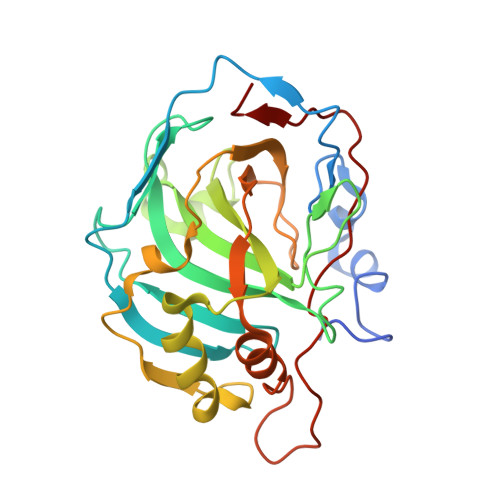The Influence of Varying Fluorination Patterns on the Thermodynamics and Kinetics of Benzenesulfonamide Binding to Human Carbonic Anhydrase II.
Glockner, S., Ngo, K., Wagner, B., Heine, A., Klebe, G.(2020) Biomolecules 10
- PubMed: 32230853
- DOI: https://doi.org/10.3390/biom10040509
- Primary Citation of Related Structures:
6RH4, 6RIT, 6RJJ, 6RKN, 6RL9, 6RNP, 6ROB, 6ROE, 6RQI, 6RRG, 6RRI, 6RS5, 6RSZ, 6S9G, 6SD7 - PubMed Abstract:
The fluorination of lead-like compounds is a common tool in medicinal chemistry to alter molecular properties in various ways and with different goals. We herein present a detailed study of the binding of fluorinated benzenesulfonamides to human Carbonic Anhydrase II by complementing macromolecular X-ray crystallographic observations with thermodynamic and kinetic data collected with the novel method of kinITC. Our findings comprise so far unknown alternative binding modes in the crystalline state for some of the investigated compounds as well as complex thermodynamic and kinetic structure-activity relationships. They suggest that fluorination of the benzenesulfonamide core is especially advantageous in one position with respect to the kinetic signatures of binding and that a higher degree of fluorination does not necessarily provide for a higher affinity or more favorable kinetic binding profiles. Lastly, we propose a relationship between the kinetics of binding and ligand acidity based on a small set of compounds with similar substitution patterns.
Organizational Affiliation:
Institut für Pharmazeutische Chemie, Philipps-Universität Marburg, Marbacher Weg 6, 35037 Marburg, Germany.




















